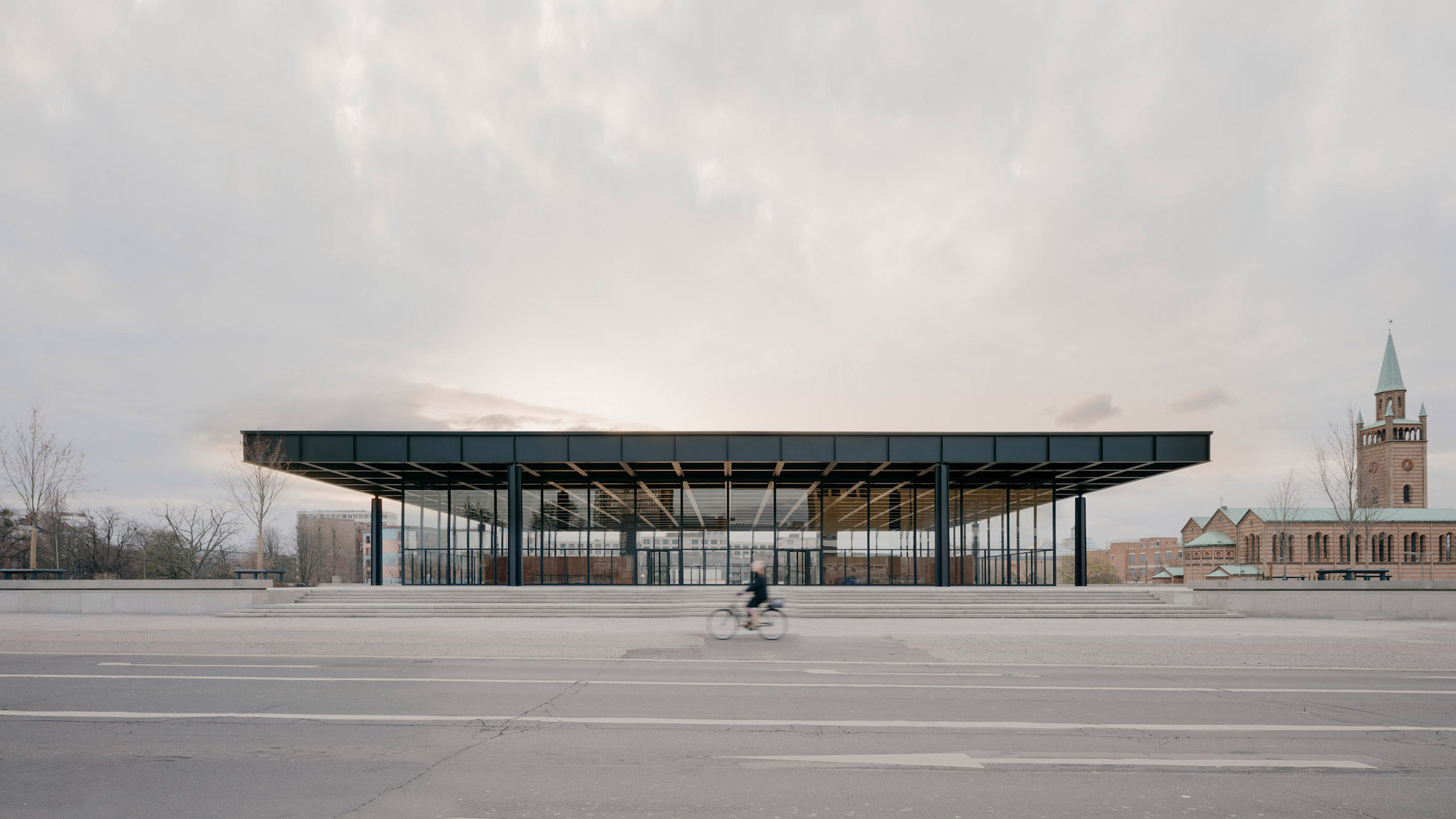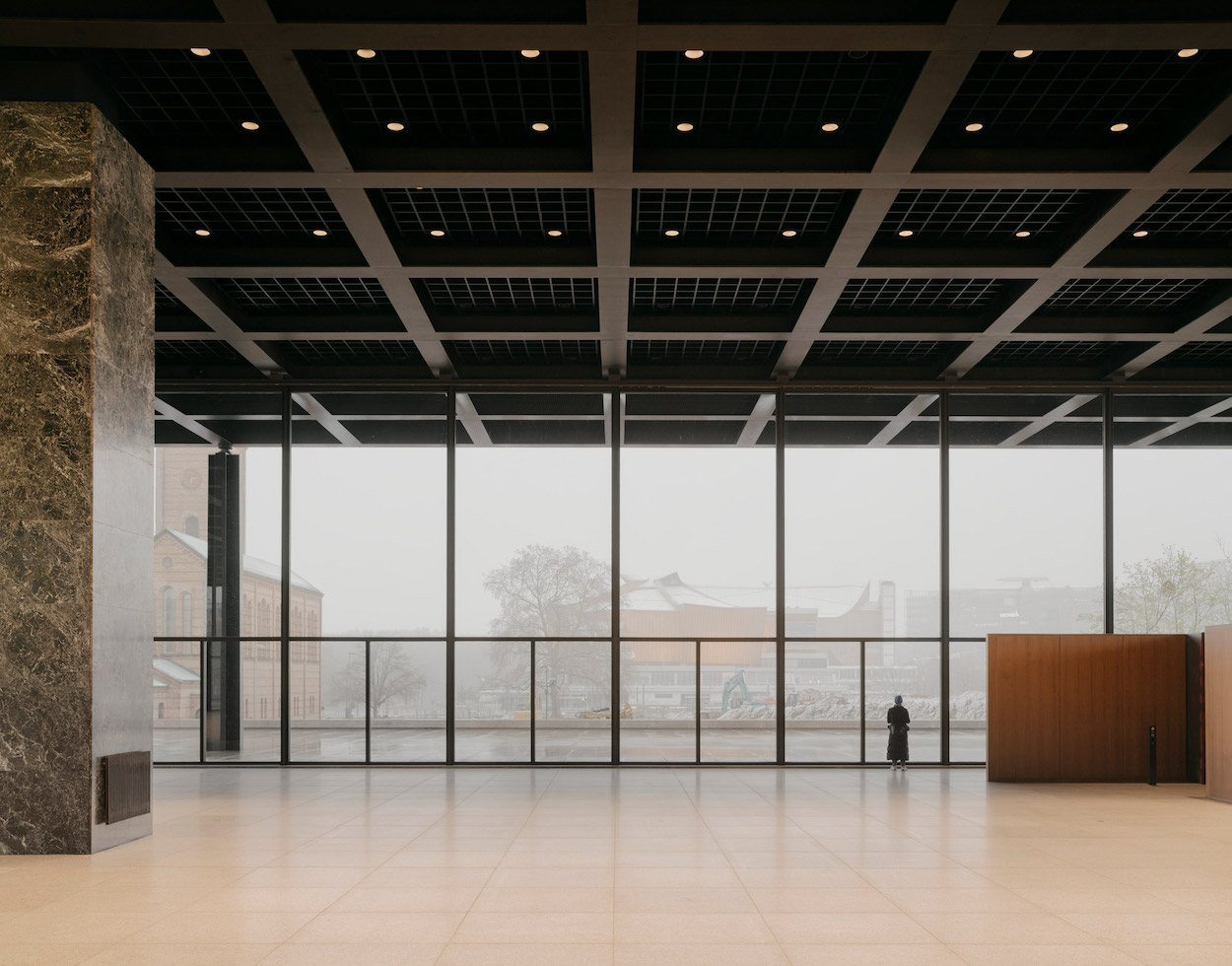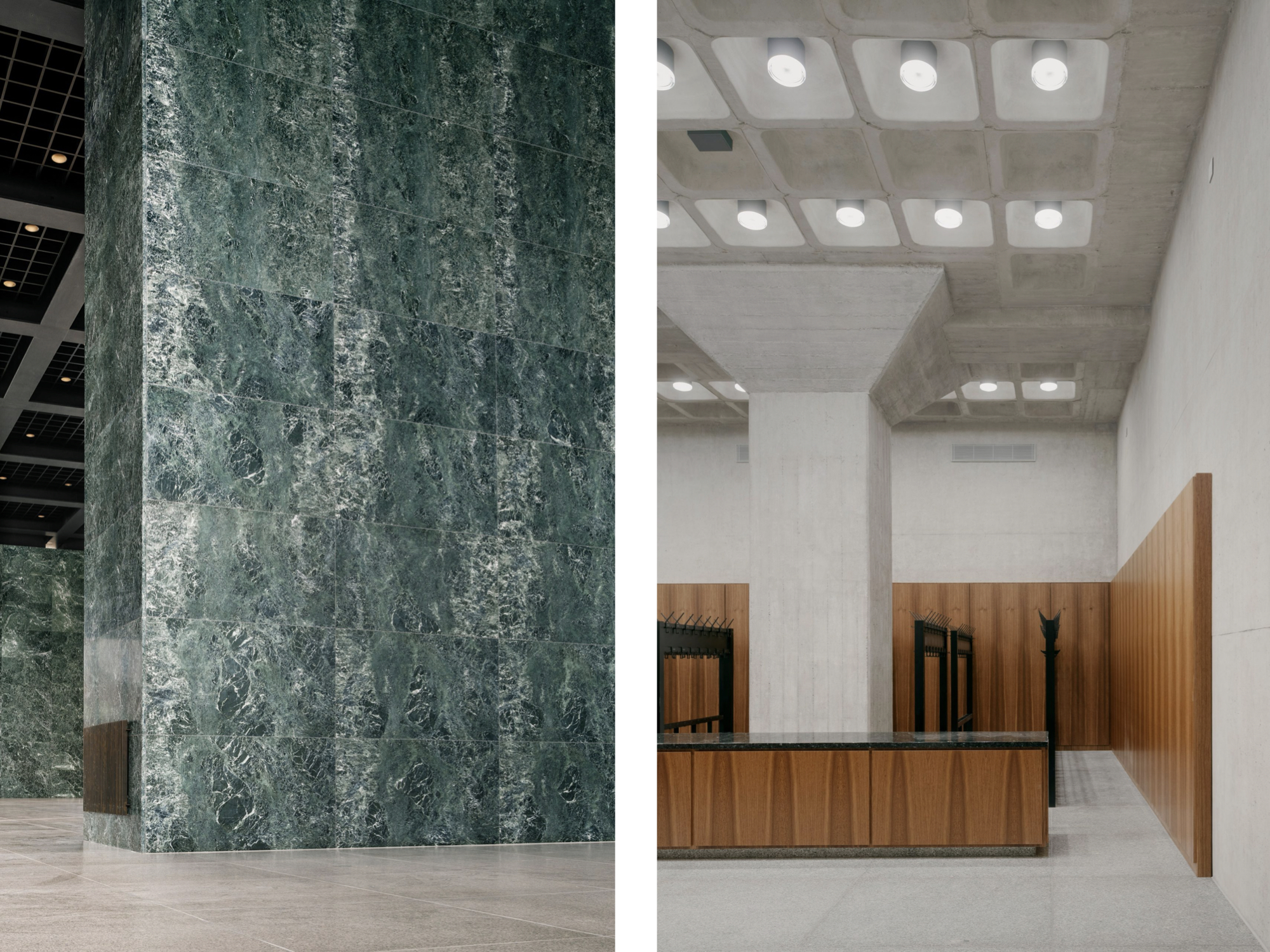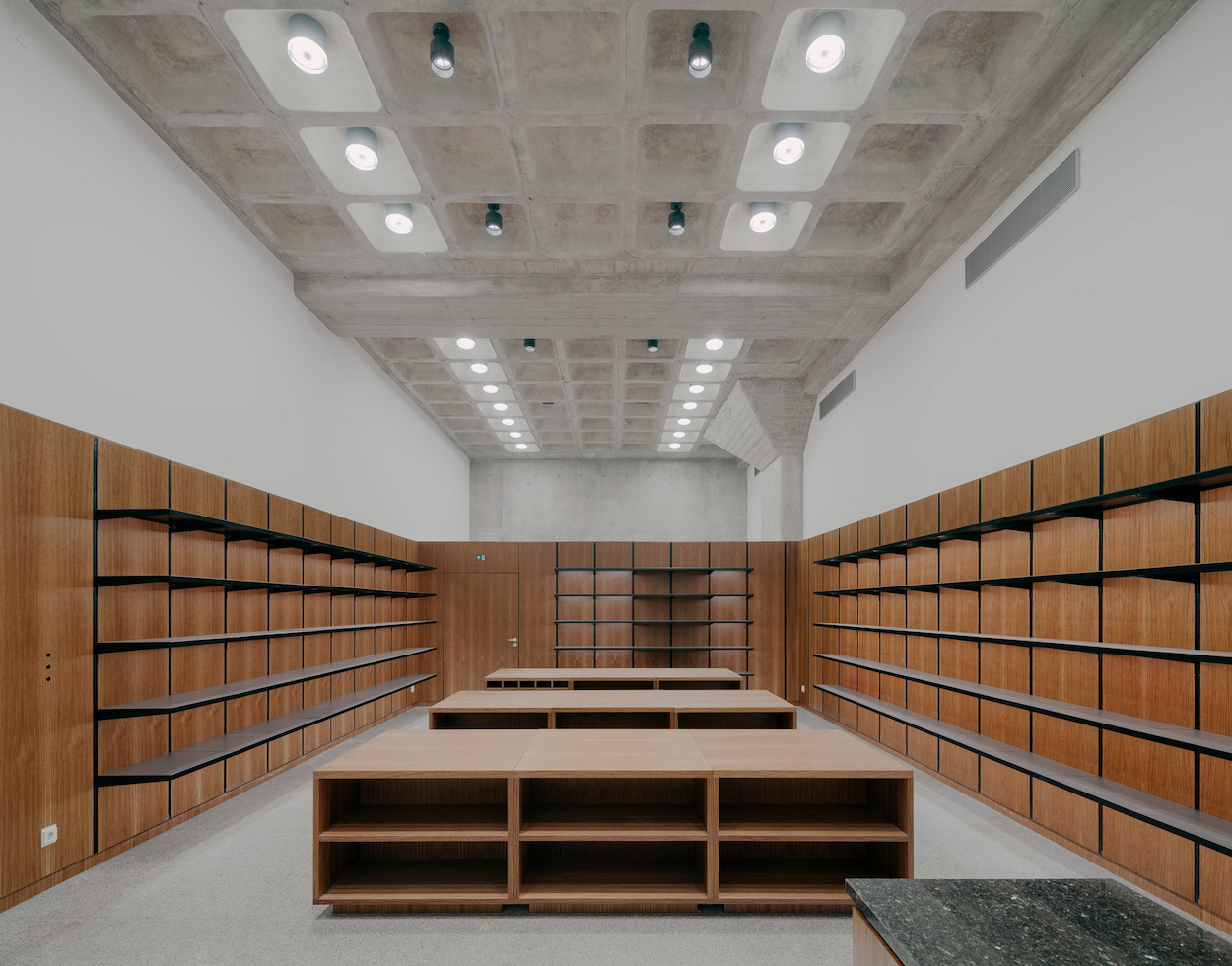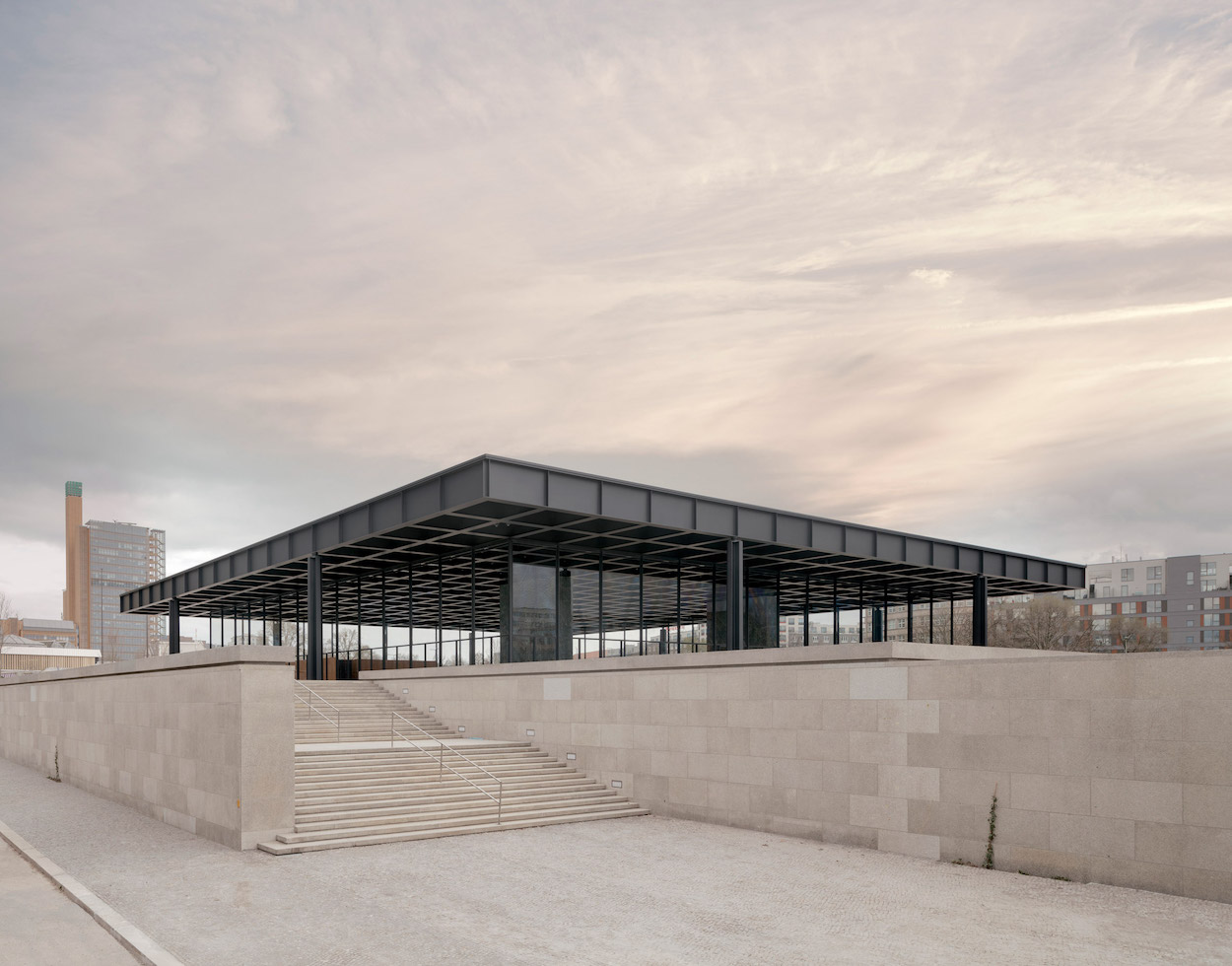In the 1930s, after Mies van der Rohe had served as the Bauhaus’s final director before the school closed at the behest of the Nazis, the architect fled to the United States. He didn’t complete another project in Europe for more than three decades, until 1968, a year before his death, when the Neue Nationalgalerie opened a stone’s throw from his former residence at the heart of Berlin’s Kulturforum. The boxy masterwork is quintessential high modernism: Vast glass windows surround a soaring, light-filled upper showroom not unlike Mies’s other International Style buildings such as the Farnsworth House in Illinois or the resplendent German Pavilion created for the 1929 International Exposition in Barcelona.
Fast forward to 2012, and the dramatically cantilevering museum had become one of the German capital’s most recognizable architectural landmarks. Since its opening, the museum has played host to a preeminent collection of modern and contemporary art, as well as large-scale temporary exhibitions by the likes of Gerhard Richter and Otto Piene. It was also in desperate need of restoration, so David Chipperfield Architects was enlisted for a complete refurbishment that has finally drawn to a close after nine years. The $168 million project involved removing every tile from the exterior grounds and marble slabs on the main-floor pillars, replacing large glass windows, and improving access for disabled visitors. A total upgrade to the 150,000-square-foot building’s lighting and HVAC systems, meanwhile, lowered its environmental footprint. In total, more than 35,000 original building components were removed to repair the building’s reinforced concrete shell.
Those expecting a “new” interpretation of Mies’s masterwork might be in for disappointment. Chipperfield’s interventions, while herculean, can best be described as a respectful repair; “as much Mies as possible” was the mandate. According to partner and managing director Martin Reichert, “there was no promise of new splendor, no promise of new qualities, no reinterpretation or aesthetic upgrade, but merely the refurbishment of the last work by Ludwig Mies van der Rohe in line with accepted conservation practices.”
The overhaul appears virtually identical to Mies’s original vision, which Chipperfield considers a success. “Dismantling a building of such unimpeachable authority was a strange experience, but one of privilege,” Chipperfield said in a statement. “The Neue Nationalgalerie is a touchstone for myself and many other architects. Seeing behind its exterior has revealed both its genius and its flaws, but overall it has only deepened my admiration for Mies’ vision. Certainly carrying out such a task in a building that leaves no place to hide is daunting, but we hope to have returned this beloved patient seemingly untouched except for it running more smoothly.” More insight into the planning, execution, and restoration will be available in the forthcoming book Neue Nationalgalerie Berlin: Refurbishment of an Architectural Icon (Jovis), which features design documents, large-format photographs, and articles by more than 30 project managers.
To commemorate the reopening, the Neue Nationalgalerie’s permanent collection of contemporary masterpieces by Edvard Munch, Pablo Picasso, Francis Bacon, and Andy Warhol (all artists once deemed “degenerate” by the Nazis) have been rehung in a new exhibition called “The Art of Society.” A temporary show by Alexander Calder, meanwhile, brings the restoration full circle—the American sculptor’s sheet metal stabile Têtes et Queue (1965) was mounted on the outdoor terrace when the museum was first inaugurated. A film installation by the local artist Rosa Barba will also display until February 13. Construction is still underway on the neighboring Museum of the 20th Century, designed by Herzog & de Meuron, which will connect to the refurbished building by an underground tunnel.
